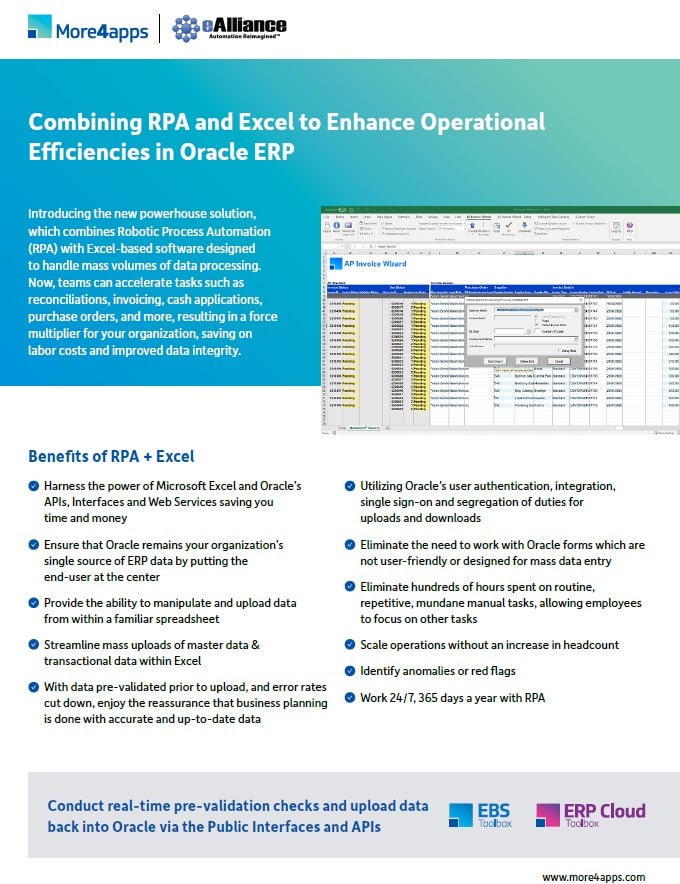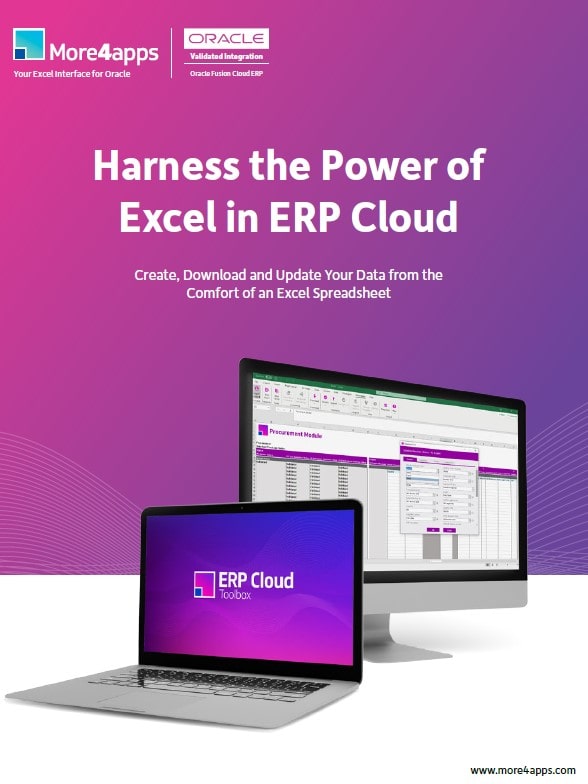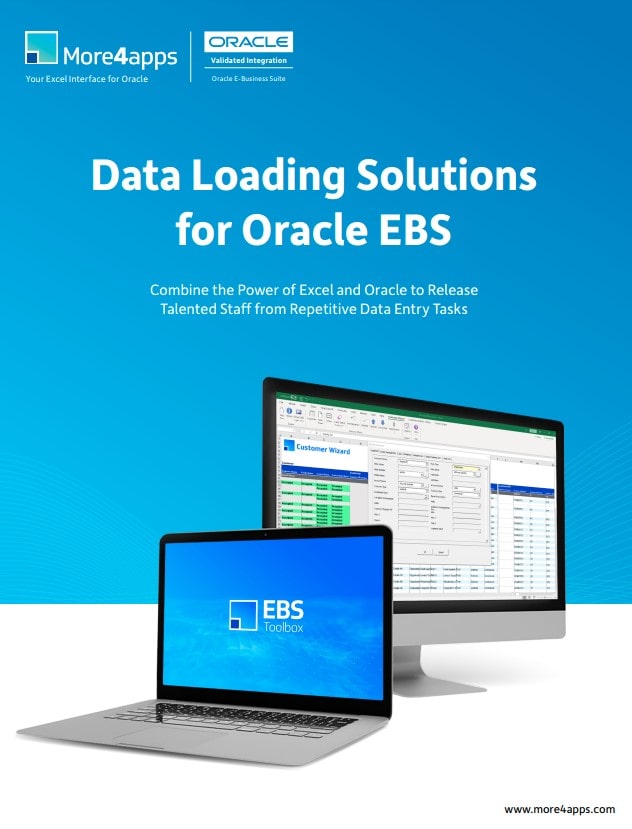RPA Bots for Oracle ERP
March 29, 2022Considerations to Explore Before Deploying RPA for Oracle ERP
In a world filled with non-integrated software applications, shifting data from one system to another is no small feat.
Desktop users spend countless hours manually re-keying and copying/pasting data at a snail’s pace, leaving room for errors, slowing up month-end close, and creating unhappy stakeholders.
System-to-System Integration isn’t Always Available or Practical
Most modern systems come with APIs to help companies create robust process automation. However, unless you can buy off-the-shelf integrations, this requires coding in-house, which is skilled work and expensive. Therefore, reserved for the smaller number of high-volume tasks where the ROI justifies the expense.
Enter Robotic Process Automation (RPA)
The fallback integration method is Robotic Process Automation (RPA). RPA is an increasingly popular way to automate system-to-system data flow in the absence of server-side integrations.
RPA bots interact with software at the UI level, and since virtually every system has a UI, this generic software can operate on a range of applications.
Factors that Weaken RPA Bots Dealing with the ERP System
User interfaces in a SaaS ERP system, such as Oracle ERP Cloud/Fusion, are prone to changes because the application is constantly modified. Oracle makes form changes on their schedule, so customers do not have control over the release of new versions.
Bots that use Oracle forms revisit them with each quarterly release to verify that the changes did not break the existing RPA bots. The bots integrating with ERP systems will frequently break if this isn’t completed seamlessly.
As complexity goes, Oracle’s EBS and Fusion ERP systems are tier I. This means the forms are large, complex with multiple zones, and not particularly fast.
The most difficult part of the integration process an RPA bot has to perform is the last stage, which is the entry of data into the ERP system. The result is fragility.
Such fragility means users have to revert to inefficient manual processes, like still having to spend time making repairs. Even worse, these bots are usually specific to individual users. You could have hundreds or even thousands of them.
The value of a fragile bot quickly disappears and can even become negative, hitting the total cost of ownership (TCO).
Using Excel-Based Software Instead of Forms
Oracle provides two ways to get data into the instance: one is forms, and the other is programmatic integrations such as PL/SQL APIs (for EBS) and SOAP/REST web services (for Fusion Cloud ERP).
As mentioned earlier, coding to use these server-side end-points is problematic as it requires scarce/expensive IT resources. The software devised by us nicely fills this gap.
The UI for our tools is Microsoft Excel; therefore, RPA bots can also operate the available toolbar functions and hand over the upload of the data to our tools, which work directly with the APIs/web services in the ERP system.
This is a lot faster than using forms data entry with the bot and reduces the risk of UI changes from Oracle. The bot gets to work at high speed with a client application rather than at a variable speed with a complex server-based data entry form.

The complexity of the data entry operation is handled by our supported application, removing substantial fragility risk from the bot.
Eliminate complex and slow user forms that change without notice when you improve your data management processes by joining RPA bots and data entry with Oracle E-Business Suite and ERP Cloud Fusion.
See for yourself when you talk to one of our experts. Click the “Contact us” button and one of our experts will contact you directly.






